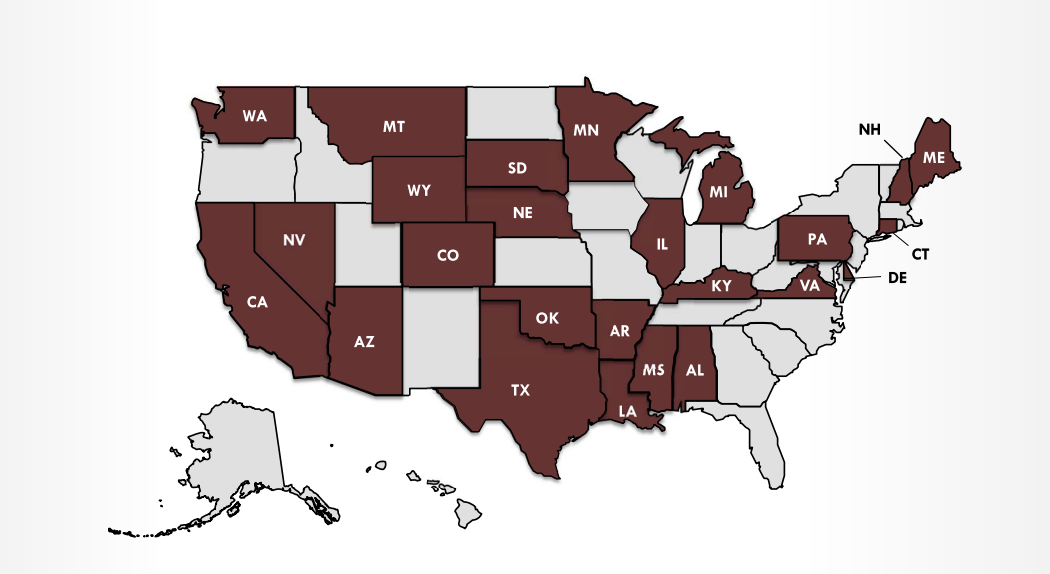Intensive Technical Assistance
Intensive Technical Assistance
OIB-TAC provides Intensive Technical Assistance to three states each year. Apply to receive free individualized feedback and guidance to make your program the best it can be!

Benefits
- Learn what procedures or practices are working well
- Identify opportunities for improvement
- Receive individualized guidance
- Develop confidence in your data collection and reporting
- Build collaborations with external stakeholders
- Empower your staff to provide quality services
What is Intensive Technical Assistance?
Intensive technical assistance includes a series of virtual meetings to collect information about the program. During a 2-day site visit, the opportunities for improvement are developed and three to five are selected for development into goals. Each goal is set up with multiple steps to be completed over the course of a year and virtual follow up meetings are held to support the completion of the goals. Topics of goals include:
- Community outreach
- Promising practices to facilitate the delivery of services.
- Program performance, including data reporting and analysis
- Financial and management practices
To begin the process, complete the intensive technical assistance application available for download. For any questions contact Kendra Farrow at kfarrow@colled.msstate.edu.
The Intensive Technical Assistance Process:
1. Application and Memorandum of Understanding (MOU)
OIB Program Managers are welcome to discuss the process or ask any questions prior to submitting the application. Email Kendra Farrow, OIB-TAC Project Director
Once the application is accepted, a memorandum of understanding, MOU, will be put in place to clarify that there is no charge for intensive technical assistance and to list the expected activities. By signing the MOU, the state agrees to participate in the activities of the intensive technical assistance.
2. OIB-TAC Review of Trends in Past 7OB Data
As part of the information-gathering process, OIB-TAC will review data from 7OB reports over the past three years. We look for trends and information that may not be giving an accurate picture of the program.
We recommend a presentation of the findings as well as general information about the Intensive Technical Assistance process to all staff. OIB-TAC can provide this virtually to the DSA's staff. It is helpful for all staff to understand the purpose of Intensive Technical Assistance prior to participation as their opinion and ideas will be included in the process.
3. OIB Program Self-Assessment and Information Sharing
To assist OIB-TAC in learning about the program, the Program Manager will be asked to complete a Self-Assessment Survey and share current policy manuals and other documents that affect or are adhered to by the program.
Virtual meetings will be scheduled to discuss and review materials together.
4. Gathering Feedback and Input from Staff and Stakeholders
OIB-TAC will conduct two virtual discussion groups.
With Staff: Tap into their experience and knowledge of OIB services to identify gaps, challenges, strengths, and opportunities.
With Stakeholders: Learn how your OIB program is perceived in the wider community. Who are potential partners that will help you to strengthen services, raise awareness, or provide other opportunities for the program and/or its consumers.
OIB TAC will provide a de-identified summary of issues and trends discovered during conversations and will review the findings with OIB management.
5. Strengths, Weaknesses/Challenges, Opportunities, Threats (SWOT)
OIB-TAC will draft the SWOT. It summarizes everything that has been learned about the OIB services and administration. It incorporates the potential opportunities identified by staff, stakeholders, and OIB-TAC.
The draft will be discussed and reviewed prior to the site visit.
The SWOT will be finalized after Day 1 of the site visit.
It is a document you can share with others, as needed, for support to effect changes within the OIB program.
6. A Two-Day Site Visit by OIB-TAC
Activities during the site visit include case file reviews, finalizing the SWOT, identification of opportunities for improvement and technical assistance on those opportunities.
Lastly, informed by the SWOT, a minimum of three measurable goals are identified.
7. Individualized OIB Program Goals and One Year of Support
Measurable goals are put on what we call a Goal Attainment Scale or GAS chart. Each goal has a minimum of 5 steps, which are themselves measurable goals.
Goals are attainable within one year or less.
OIB-TAC will support the OIB Program to achieve the goals for a period of 12 months.
Since its inception in October 2015, OIB-TAC has provided intensive technical assistance to older blind programs in the following states:
